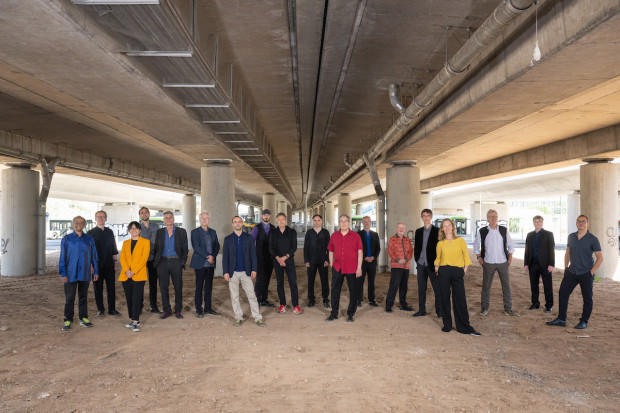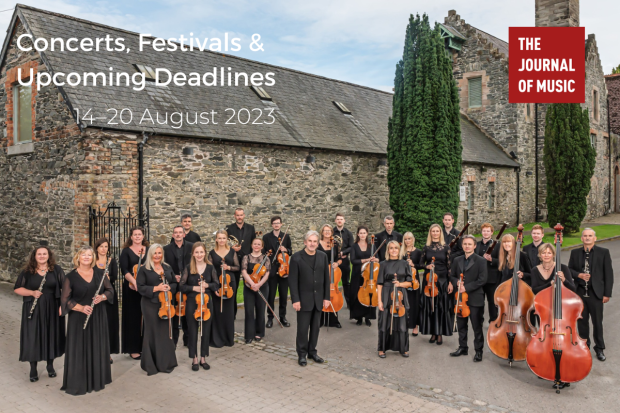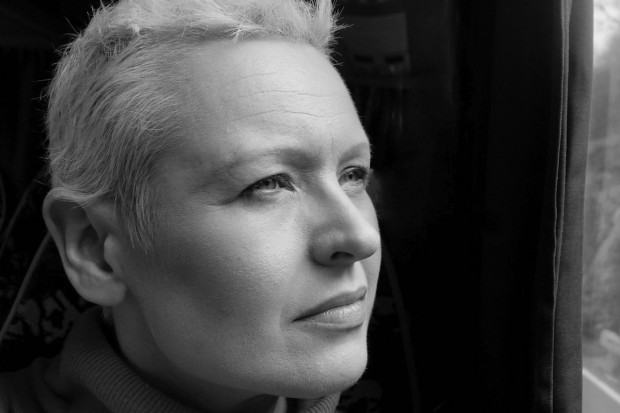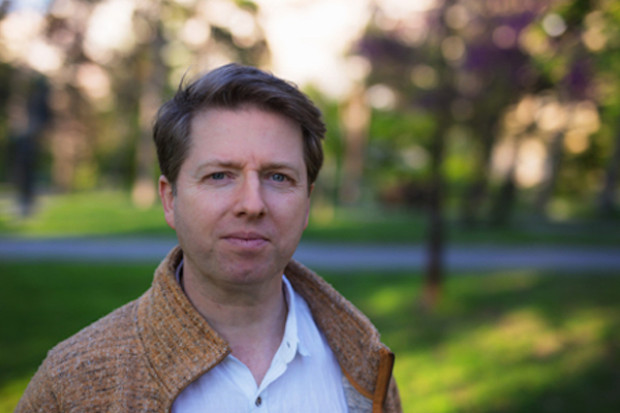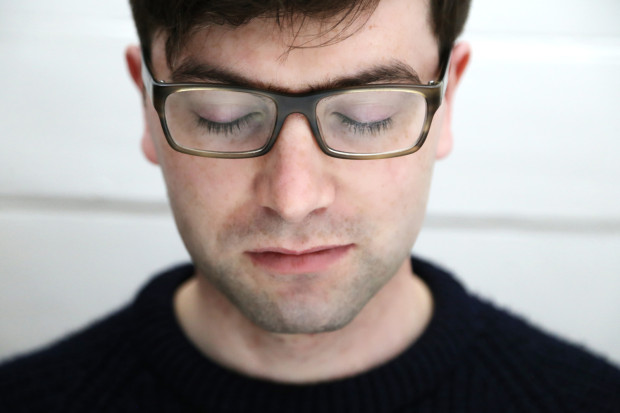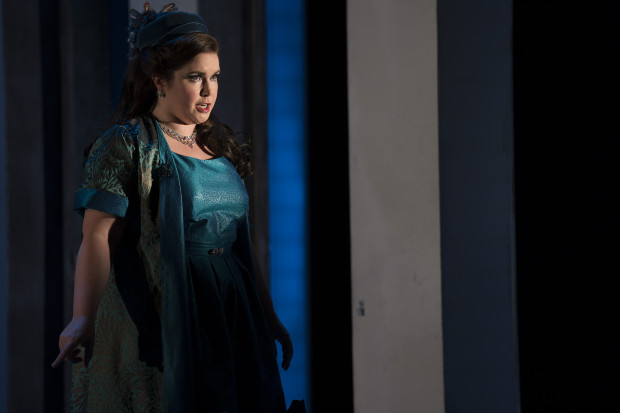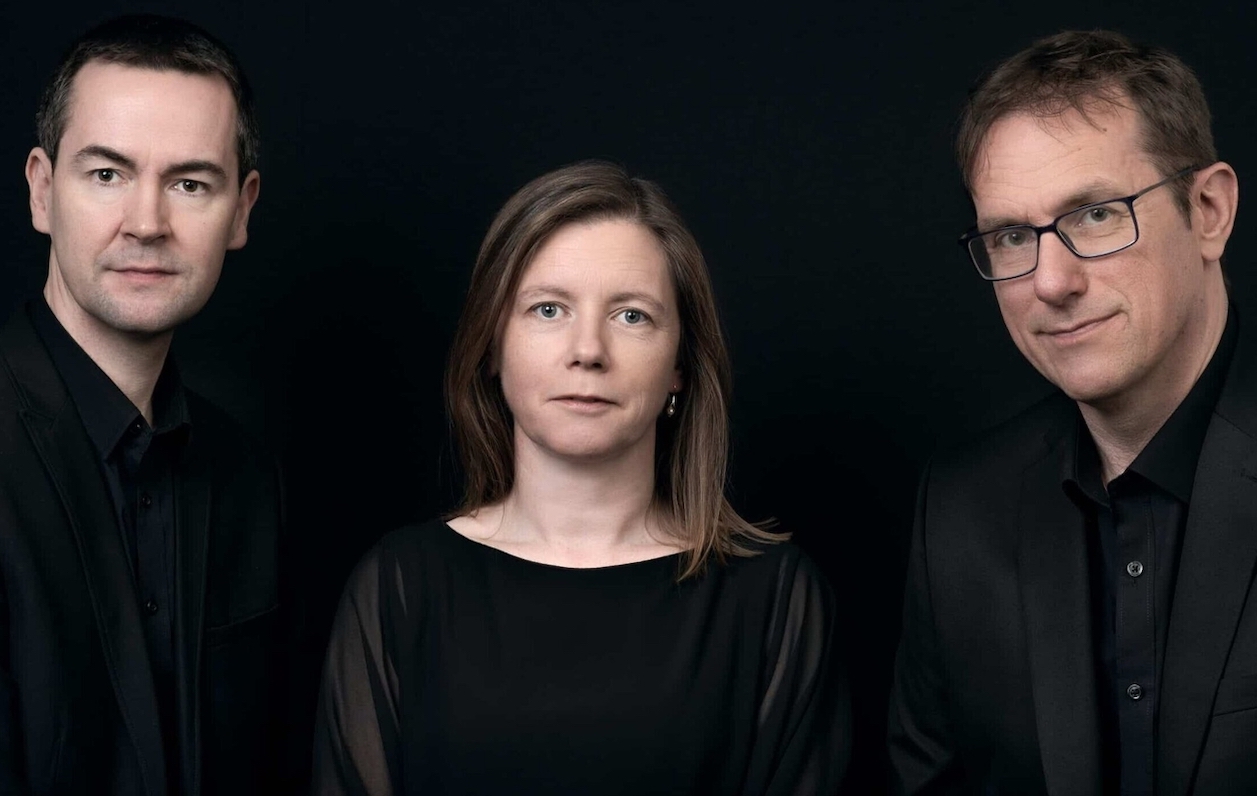
The Fidelio Trio – Darragh Morgan, Mary Dullea and Tim Gill
A Winter Highlight
After being forced online last year, the Fidelio Trio’s Winter Chamber Music Festival was back in live format this year for its ninth edition. Hosted by Dublin City University and presented by GlasDrum – a community arts organisation that promotes cultural activities in the Drumcondra/Glasnevin area – the festival is one of the highlights of the classical music calendar due to its intimate setting and balanced programmes of standard and contemporary repertoire. The Journal of Music managed to cover two out of the three days of this year’s festival (Friday 27th and Saturday 28th November).
Expressive tone
The festival kicked off with a concert of Russian music plus the Irish premiere of a piece for solo violin by Kevin Volans. The characteristically meandering opening melody of Shostakovich’s Sonata for Cello and Piano in D minor provided the ideal vehicle for cellist Tim Gill to demonstrate his intensely expressive tone which made such a forceful initial impression that it almost threatened the balance between himself and Mary Dullea at the piano. Dullea quickly grew into the piece however and both musicians found the perfect balance during the subsequent quieter section and development. The duo’s lock-step rhythmic accuracy impressed in the Scherzo before the slow third movement once again brought the focus on Gill’s distinctive tone, more brooding this time with each sustained note perfectly drawn out with controlled vibrato. Dullea’s resonant voicing of the dark, mildly dissonant chords in this movement and her clarity in the difficult scale passagework of the finale were exemplary.
Distinctiveness of tone was also a feature of the next item – Galina Ustvolskaya’s Clarinet Trio – which introduced the audience to the full-bodied, velvety smoothness of clarinettist Francesco Paolo Scola, who was performing as the principal guest artist in this year’s festival. His sound instantly attracted one’s attention during the solitary opening melody of Ustvolskaya’s Trio and was soon set against the high-tension playing of violinist Darragh Morgan. The trio’s beautiful pacing of the first and second movements allowed the space for both Morgan and Paolo Scola to wallow in Ustvolskaya’s darkly expressive sonorities before launching into the hard-edged Shostakovich-inspired counterpoint of the final movement.
Volans’ Baobab is part of a series of virtuoso pieces he wrote for friends who had to migrate online to continue performing during the pandemic. Originally written for saxophone, Volans subsequently adapted the piece for violin and later viola with the former being featured in this concert played by Morgan. The majority of the piece’s material is extracted from Volans’ cello concerto – often quite literally as a listen to the concerto itself will confirm. While the short asymmetric rhythmic patterns worked well in the concerto when set against the inventiveness of the orchestration, on solo violin they were much less interesting and didn’t really justify the piece’s 12-minute duration.
The concert concluded with a selection of short pieces by Stravinsky commemorating the half centenary of the composer’s death. These included Three Pieces for Solo Clarinet, Piano-Rag-Music, the Ballad from the The Fairy Kiss and the Suite Italienne. All were well-performed but the highlights for me were the two solo pieces – Paolo Scola’s soulful interpretation of the Three Pieces and Mary Dullea’s forceful performance of the Piano-Rag-Music with its difficult cross-rhythms and plunging dissonances.
Festival standout
This year the organisers decided to venture out beyond the festival’s home at Belvedere House to the National Botanic Gardens at Glasnevin. This Saturday lunchtime concert in the floor above the Garden Tearoom afforded a wonderful panoramic view of the gardens themselves and was entirely dedicated to the festival’s two guest artists. Paolo Scola was again featured with a performance of Berio’s virtuosic Sequenza IX for clarinet while the festival’s featured young artist – cellist Angus McCall – performed Bach’s Cello Suite No. 5 in C minor.
From the opening chords of the prelude, the resonant warmth of McCall’s tone – particularly in the lower registers of the instrument – instantly drew in the listener. While some of the faster passages occasionally lacked finesse, there was never any doubt about the musicality of his playing which particularly shone in the wonderful lilting quality of the Allemande and the brittle delicacy of the Sarabande.
While Paolo Scola’s tone was one of the highlights of the opening concert, his performance of Berio’s Sequenza IX was perhaps the standout of the festival. Aided by the resonance of the room, his tone seemed to physically fill the space. His transition from regular playing to extended techniques was so smooth that one seemed like a natural extension of the other and his execution of the intensely difficult passagework was carried off with such panache that the piece seemed to literally swing in places.
While both of these performances were excellent, the concert experience was far from ideal due to the insistence of the administration at the Botanic Gardens that all windows be open to ventilate the space. This not only generated an unpleasant draught that froze the audience but also interfered with the beginning of Paolo Scola’s performance by repeatedly blowing the music off his music stand. Thankfully, sense eventually prevailed and most of the windows were closed allowing the performance to go ahead.
Not quite fringe
In addition to contemporary repertoire, one of the features of the Fidelio’s curatorial style is the inclusion of repertoire that, while not quite fringe, is rarely heard live. The Saturday evening concert featured early period works by composers from the first half of the 20th century alongside a new work by Irene Buckley for piano trio and electronics.
The Brahms-influenced Romanticism of Samuel Barber’s Sonata for Cello and Piano which opened the concert was well handled by the duo of Gill and Dullea. Its warm, rhapsodic character formed a direct contrast to the abstract hardness of Ruth Crawford Seeger’s Sonata for Violin and Piano that followed. Although replete with bursts of angular, expressionist melodic writing, the most interesting feature of the piece’s first movement was the way in which it seemed to frequently dissolve into itself, leaving plaintive, delicate melodies on the violin hovering over delicate piano accompaniment. This reflective tendency recurred throughout, even in the more rhythmic sections such as the spiky second movement with its tricky double-counterpoint.
According to the composer, Buckley’s Stray was inspired by the ‘vivid colours and dense layers’ of John B. Vallely’s painting A Piper in the Meadow Straying. An electronic part, that seemed derived from layered string sounds, formed a halo-like canvas onto which the violin and cello added short, bitty figures consisting of double-stopped dyads, glissandi and expressive vibrato while the piano noodled away in the background with a texture of single-note right-hand melodies and left-hand chords. The resultant melancholic texture was certainly very atmospheric and would have made very effective soundtrack material but it surely would have been more interesting if some development or sense of change had occurred. At only six and half minutes, the piece felt more like the exposition of material for a larger work of a much longer duration.
Illustrating the Fidelio’s evident love of pairing contrasting pieces, the final piece of the concert – Erich Korngold’s Piano Trio – certainly lacked no shortage of change. Composed at the astonishingly young age of twelve, the piece was literally bursting with ideas to the extent that it seemed barely able to contain all of them. As exciting as this may be, the compulsive tendency to launch into a new idea before the previous one seems completed poses its own interpretive challenges when it comes to pacing. However, the intensity and concentration of the Fidelio Trio’s performance of this piece never wavered and it formed a wonderful end to a very satisfying and varied evening.
The slightly scaled-back nature of this year’s festival – which featured solos, duos and trios over quartets and quintets – didn’t at all diminish the sense of enthusiasm and excitement that the Fidelio Trio bring to this special festival. Despite the slight mishap at the Botanical Gardens, the festival organisers managed to negotiate the Covid-19 restrictions in a common sense manner with ventilation breaks separating both halves of the evening concerts and spaced-out seating. In some ways, the reduced capacity only enhanced the intimate audience experience that is a unique feature of this festival. Indeed hearing such committed playing and thoughtful programming in spite of the prevailing restrictions was in itself inspiring and shows what can be done with partnerships between artists, third-level institutions and dedicated community arts organisations.
Published on 2 December 2021
Adrian Smith is Lecturer in Musicology at TU Dublin Conservatoire.










